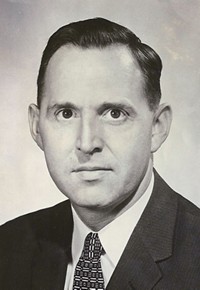Advertisement
Grab your lab coat. Let's get started
Welcome!
Welcome!
Create an account below to get 6 C&EN articles per month, receive newsletters and more - all free.
It seems this is your first time logging in online. Please enter the following information to continue.
As an ACS member you automatically get access to this site. All we need is few more details to create your reading experience.
Not you? Sign in with a different account.
Not you? Sign in with a different account.
ERROR 1
ERROR 1
ERROR 2
ERROR 2
ERROR 2
ERROR 2
ERROR 2
Password and Confirm password must match.
If you have an ACS member number, please enter it here so we can link this account to your membership. (optional)
ERROR 2
ACS values your privacy. By submitting your information, you are gaining access to C&EN and subscribing to our weekly newsletter. We use the information you provide to make your reading experience better, and we will never sell your data to third party members.
People
Harry W. Coover Jr.
by Susan J. Ainsworth
May 16, 2011
| A version of this story appeared in
Volume 89, Issue 20
Harry W. Coover Jr., 94, the Eastman Kodak chemist who invented Super Glue, died at his home in Kingsport, Tenn., on March 26.
Born in Newark, Del., Coover received a B.S. from Hobart & William Smith Colleges in Geneva, N.Y., before earning M.S. and Ph.D. degrees from Cornell University.
He joined Eastman Kodak as a chemist in 1944, and served as vice president of the company from 1973 until 1984.
The invention of the compound that would become Super Glue resulted from Coover’s work with cyanoacrylates as possible materials to make clear-plastic gun sights. When the compounds were deemed too sticky for the intended application, the cyanoacrylates were shelved for six years until Coover recognized that one of the compounds functioned as a unique adhesive. Kodak marketed the compound as Super Glue beginning in 1958.
Coover later founded a consulting firm and served as president of Loctite until 2004. He was credited with 460 patents in areas such as organophosphorus chemistry and olefin polymerization. He was an emeritus member of ACS, joining in 1945.
Coover was inducted into the National Inventors Hall of Fame in 2004 and received the National Medal of Technology & Innovation from President Barack Obama in 2010.
Coover’s wife, Muriel, died in 2005. He is survived by a daughter, Melinda Paul; sons, Harry and Stephen; and four grandchildren.




Join the conversation
Contact the reporter
Submit a Letter to the Editor for publication
Engage with us on Twitter